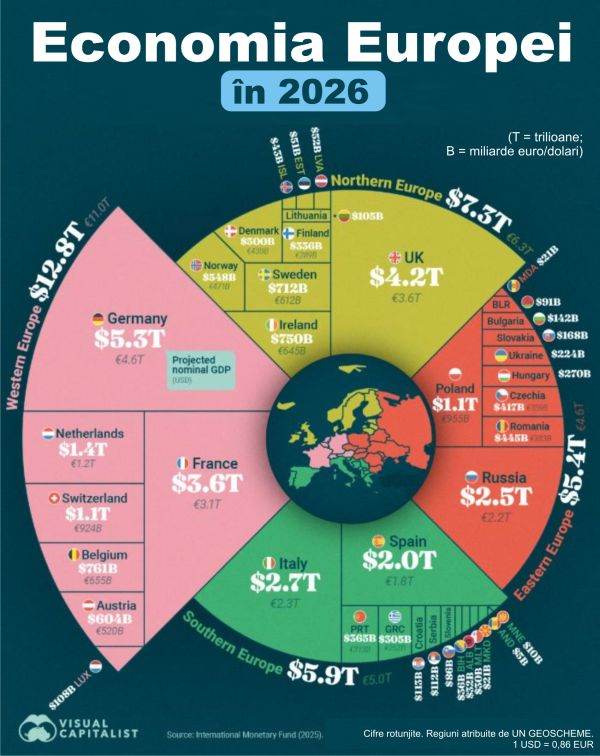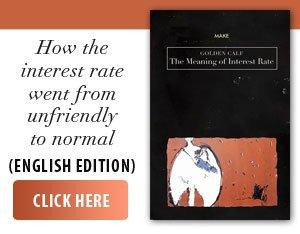After two years of sluggish activity, Europe's economic engine is expected to regain traction. The International Monetary Fund's (IMF) latest Global Economic Outlook report estimates that the region's Gross Domestic Product will reach $31.4 trillion (euro27 trillion) in 2026, with the largest increases concentrated in Western Europe, according to visualcapitalist.com.
• Germany, Europe's leader
The IMF expects Germany to regain momentum, adding almost $400 billion to its economy between 2024 and 2026. At $5.3 trillion, it will represent about 17% of total European GDP, leading the way. Close behind are the United Kingdom and France, with savings of $4.2 trillion and $3.6 trillion, respectively. The ranking of European countries is based on their estimated nominal GDP in dollars or euros.
Together, the three countries mentioned will generate over 40% of Europe's total economic activity next year. This underlines how large markets dominate the regional picture.
In fourth place is Italy ($2.7 trillion), and in fifth - Russia ($2.5 trillion). Spain occupies the sixth position ($2 trillion), and in seventh we find the Netherlands ($1.4 trillion). Places 8-10 look like this: Poland ($1.1 trillion), Switzerland ($1.07 trillion), Belgium ($761 billion).
According to the cited source, Western Europe will have an economy of 12.8 trillion dollars, Northern Europe - 7.3 trillion dollars, Southern Europe - 5.86 trillion dollars, Eastern Europe - 5.39 trillion dollars.
• Southern and Eastern Europe - on divergent paths
The continent can be practically divided into two halves: the northern and western, and the southern and eastern half, respectively. Italy and Spain, the major economies of Southern Europe, are on track to have a modest expansion in 2026, according to the aforementioned data ($2.7 and $1.8 trillion, respectively).
In Eastern Europe, Russia is estimated at 2.5 trillion dollars, helped by energy exports, while Poland enters the continental top 10 with $1.1 trillion.
However, despite a decade of rapid progress that has led to real GDP per capita growth in the East, there is still a long way to go to narrow the income gap with the West.
• Recovery from the pandemic and the energy crisis
The IMF has good news, but also bad news for Europe. According to the source cited, the good news is that the pandemic and the shocks generated by the energy crisis have passed, and the continent is officially in recovery mode thanks to "good policy decisions.” This has generated higher real wages, which have stimulated consumption, especially in Germany, Europe's largest economy.
The bad news is that US President Donald Trump's trade war is causing uncertainty and will reduce Europe's economic growth by 0.5 percentage points, which will be somewhat offset by higher spending on infrastructure and defense. However, in turn, this higher government spending comes at the expense of debt.

























































